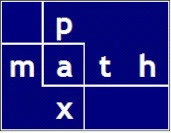For the first time, scientists mapped in high-resolution a critical area of the seafloor in front of the glacier that gives them a window into how fast Thwaites retreated and moved in the past.
Article in Nature Journal
Rapid retreat of Thwaites Glacier in the pre-satellite era
Graham, A.G.C., Wåhlin, A., Hogan, K.A. et al. Rapid retreat of Thwaites Glacier in the pre-satellite era. Nat. Geosci. (2022). https://doi.org/10.1038/s41561-022-01019-9
Abstract
Understanding the recent history of Thwaites Glacier, and the processes controlling its ongoing retreat, is key to projecting Antarctic contributions to future sea-level rise. Of particular concern is how the glacier grounding zone might evolve over coming decades where it is stabilized by sea-floor bathymetric highs. Here we use geophysical data from an autonomous underwater vehicle deployed at the Thwaites Glacier ice front, to document the ocean-floor imprint of past retreat from a sea-bed promontory. We show patterns of back-stepping sedimentary ridges formed daily by a mechanism of tidal lifting and settling at the grounding line at a time when Thwaites Glacier was more advanced than it is today. Over a duration of 5.5 months, Thwaites grounding zone retreated at a rate of >2.1 km per year—twice the rate observed by satellite at the fastest retreating part of the grounding zone between 2011 and 2019. Our results suggest that sustained pulses of rapid retreat have occurred at Thwaites Glacier in the past two centuries. Similar rapid retreat pulses are likely to occur in the near future when the grounding zone migrates back off stabilizing high points on the sea floor.
Click for article in Nature Journal
The glacier is named after Fredrik T. Thwaites (1883–1961), a glacial geologist, geomorphologist, and professor emeritus at the University of Wisconsin–Madison.
Reference
Click for post by University of South Florida College of Marine Science
Click for blog entry A Climate Science Obsession with the Thwaites Glacier

